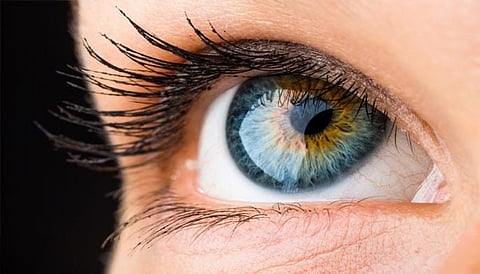
- Home
- Live Blog
- Breaking News
- Top Headlines
- Cities
- NE News
- Sentinel Media
- Sports
- Education
- Jobs

Dr. Dharmakanta Kumbhakar
Donation of eye tissue can allow transplantation of the cornea and the sclera. In India, we have an estimated 4.6 million people with corneal blindness that is curable through corneal transplantation made possible by eye donation. According to the National Programme for Control of Blindness 2012–13 report, only 4,417 corneas were available in 2012–13 against a whopping requirement of 80,000 – 1, 00,000 per year.
The cornea is the clear surface at the front of the eye which covers the colored part of the eye and is the main focusing element. It allows light to pass through to the retina, giving sight. When the cornea becomes cloudy from disease, injury, infection or any other cause, vision will be drastically reduced. Corneal transplants restore sight to people who are partially or completely blind due to corneal damage following a genetic condition, illness or injury. Cornea transplant is the surgical procedure which replaces a disc-shaped segment of an impaired cornea with a similarly shaped piece of a healthy donor cornea. More than 90% of corneal transplantation is carried out successfully and helps restore vision in people with corneal blindness. Corneal transplantation in infants born with cloudy cornea can make a big difference to their lives.
Facts:
Who can donate eyes?
Eye donors can be of any age group or sex. People who use spectacles, diabetics, patients with high blood pressure, asthma patients and those without communicable diseases can donate eyes. Persons with AIDS, Hepatitis B and C, Rabies, Septicemia, Acute leukemia (Blood cancer), Tetanus, and infectious diseases like Meningitis and Encephalitis cannot donate eyes.
When does donation take place?
The surgical removal of the eye tissue is performed soon after death usually within 4 hours after death in summer season and within 6 hours after death in winter season, ensuring the tissue is in the best possible condition for transplant. This also makes sure that the funeral arrangements are not delayed in any way. Because the removal causes no disfiguration, an open casket is still an option for the donor family.
How can a person become a donor?
The most important action a person can take is to tell his/her family and legal representative. Most States now require that families be offered the option of donation when a loved one dies. Families may give consent for donation. It is most helpful if they know in advance that she/he would like to donate her/his eyes. A donor card can serve as an indication to the family/ legal representative and hospitals of one’s intention to be an eye donor.
Few important points about eye donation: